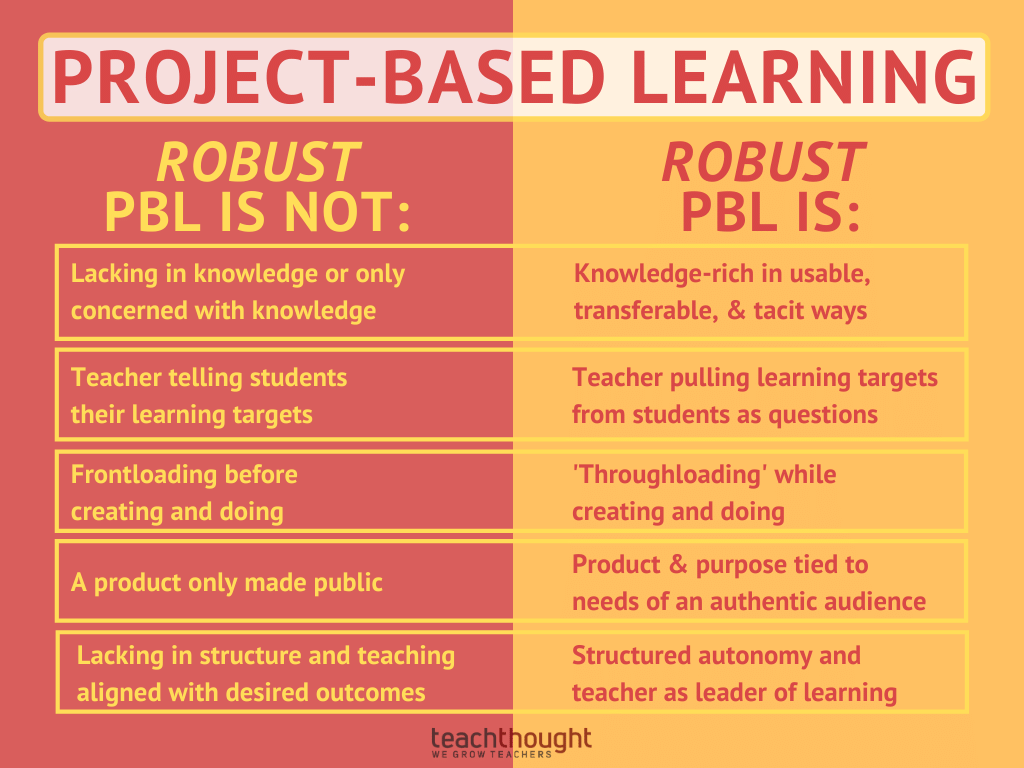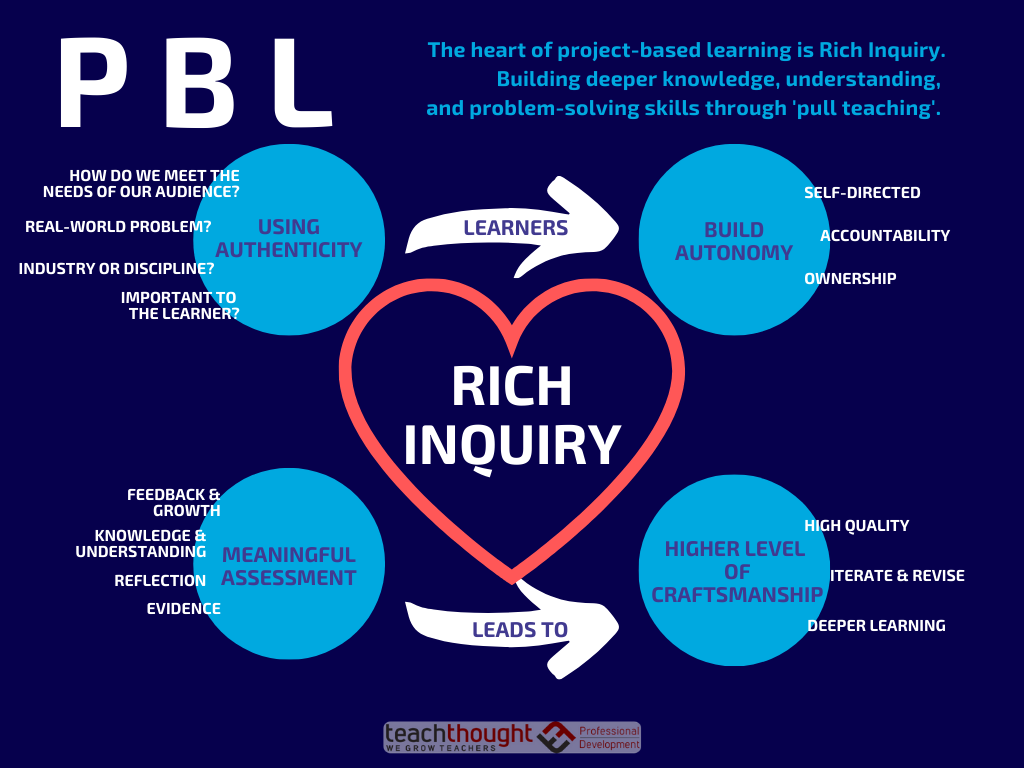
Robust PBL For Teachers: An Updated Guide
contributed by Drew Perkins
Definition of robust (www.merriam-webster.com/dictionary/robust)
1a: having or exhibiting strength or vigorous health
b: having or showing vigor, strength, or firmness
c: strongly formed or constructed
d: capable of performing without failure under a wide range of conditions
In the conversation to improve project-based teaching and learning it is important to recognize at least a couple truths.
First, there are varying degrees of how effective any project-based learning experience will be due to a variety of factors including teacher and student experience with PBL, the nature of the project, and outside variables that are the reality of any school. The aim is to turn all the knobs to 11 but that’s not reality. With any PBL experience, it’s most likely there will be pieces you wish were more impactful. Effective teaching with PBL is not an easy skill to master and it takes practice and time for refinement.
Second, there are different models for designing and delivering PBL. I’d argue that any quality PBL approach includes some commonalities, especially the use of what we call Rich Inquiry as a central feature. There are several PBL models and organizations each with their own unique language and characteristics. We certainly think our PBL model works well but truth be told, just like with the greatest of schools, the real value of any PBL PD organization is the strength of their facilitators as learning leaders.
An important question then is how to do project-based learning that is strong and vigorous, well-constructed, and performs under a wide range of conditions. How do we design and deliver robust PBL in our classrooms?
Knowledge
One of my favorite parts of my work is hosting the TeachThought Podcast because I get to learn through discussions with smart people. The criticism and ensuing examination of progressive, constructivist teaching as lacking in delivering important knowledge has come up more than once. I wrote about The Importance Of Knowledge In Progressive Education. Robust PBL incorporates learning of knowledge in multiple critical thinking processes to create usable and transferable tacit knowledge and understanding.
Pull, Not Push Teaching
The most traditional teaching features the teacher pushing information at students to be tested and moved on from. Usually this entails displaying learning targets or ‘I Can’ statements and the teacher teaching directly to those. We see teachers doing this sometimes while attempting PBL. Robust PBL flips that by facilitating a process of unpacking what questions we need to know and learn in order to answer a Driving Question and challenge. We like to call this ‘pull teaching‘ and this Rich Inquiry is the heart of how we think about PBL. To be clear, the teacher designs the project with those learning targets in mind. We advocate turning content standards into questions and considering how your students will ask them in their words with your guidance and help as the learning leader. Our Straw Project Exemplar planning documents show an example that we hope is helpful.

No Frontloading
Quite often PBL Workshops we encounter teachers creating a project for content knowledge and understanding students have already been taught. This concept of ‘frontloading’ feels like a necessary step for some because they intuit that students can’t ask questions about things they don’t know. It’s true that the most beautiful questions come from a deeper understanding but that doesn’t justify frontloading. Instead robust PBL engages student learning of knowledge and understandings as ‘throughloading’ (is that really a word?). By flipping Bloom’s Taxonomy, we ask students to create (or a synonymous verb), pull the important rememberings and understandings, and then learn them through the project.
Authentic Audience Not Just Public
There is value in students making their work public. This can create a level of accountability and increase engagement or interest as the eyes on student work is more than just the teacher. Robust PBL includes an authentic audience that makes it public but also bakes in an important lever for Craftsmanship and Rich Inquiry. A skilled PBL teacher now has the tool of improving the quality of student work by asking how well, and in what ways, their work meets the audience’s needs. This means the student has to clarify who that audience is and their needs through a series of questions.
This Isn’t Free Range Chicken
I often joke about this in our workshops because there’s a (sometimes rightful) criticism that students are just given a challenge and set free to learn on their own in PBL. Treating students like free-range chicken is a recipe for disaster regarding management and learning. In robust PBL teachers are leaders of the learning and provide varying and appropriate levels of autonomy to set students up for success and growth. You’re still in charge and you’re still teaching. By creating checkpoints and using tools for accountability like contracts students are helped along the process. There may be students and pieces in a project that allow for more autonomy and independent learning but in most project-based learning experiences real teaching needs to happen to help with real learning.
Don’t be discouraged from trying PBL and starting small. Focusing on the important aspects to make even the smallest of projects robust can be a great springboard to more involved ones. While mediocre PBL is more desirable than drill-and-kill instruction, the most excellent project-based learning experiences can be transformative for teachers and learners as they prepare for the modern world.
